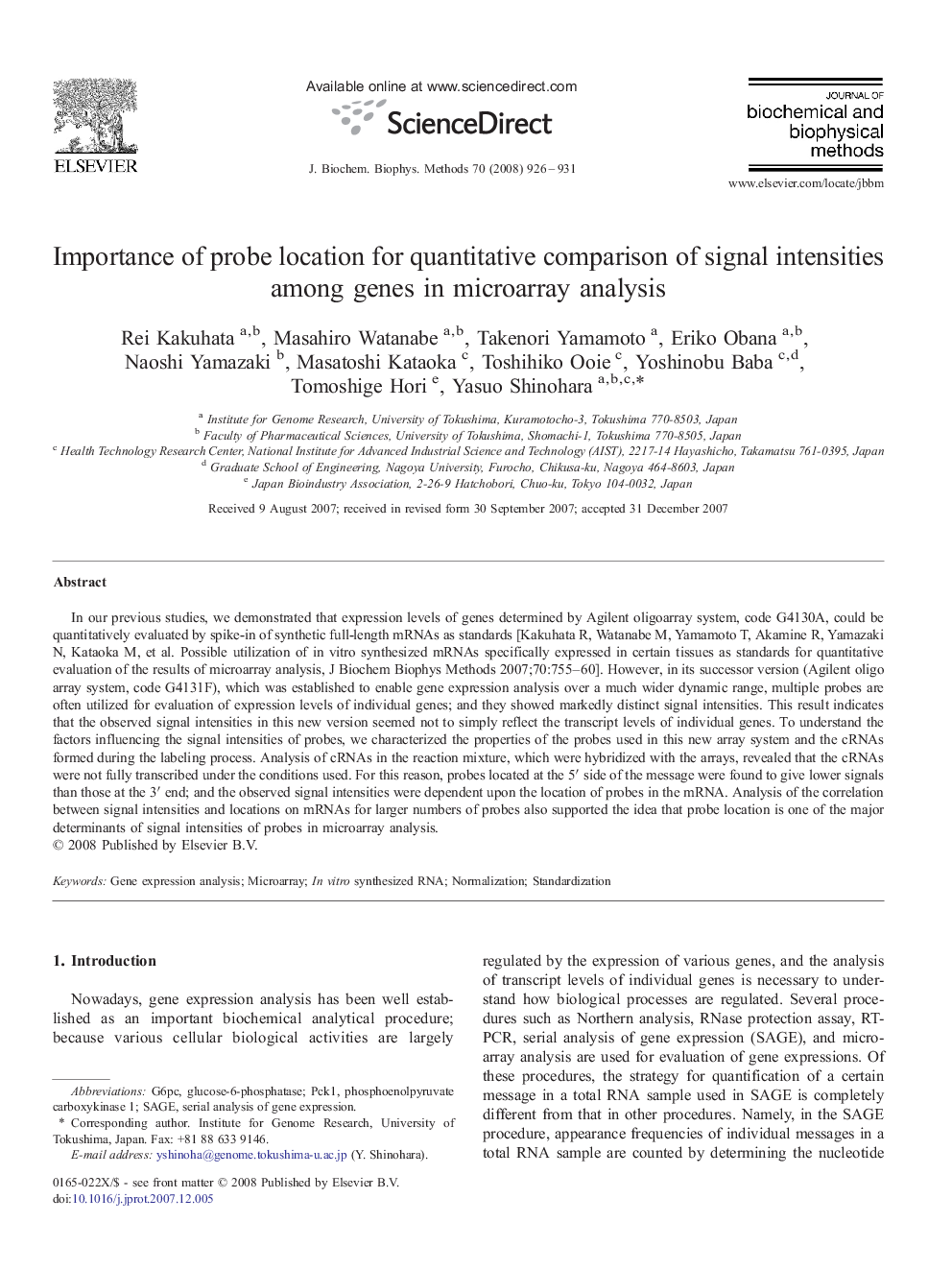| Article ID | Journal | Published Year | Pages | File Type |
|---|---|---|---|---|
| 1988370 | Journal of Biochemical and Biophysical Methods | 2008 | 6 Pages |
In our previous studies, we demonstrated that expression levels of genes determined by Agilent oligoarray system, code G4130A, could be quantitatively evaluated by spike-in of synthetic full-length mRNAs as standards [Kakuhata R, Watanabe M, Yamamoto T, Akamine R, Yamazaki N, Kataoka M, et al. Possible utilization of in vitro synthesized mRNAs specifically expressed in certain tissues as standards for quantitative evaluation of the results of microarray analysis, J Biochem Biophys Methods 2007;70:755–60]. However, in its successor version (Agilent oligo array system, code G4131F), which was established to enable gene expression analysis over a much wider dynamic range, multiple probes are often utilized for evaluation of expression levels of individual genes; and they showed markedly distinct signal intensities. This result indicates that the observed signal intensities in this new version seemed not to simply reflect the transcript levels of individual genes. To understand the factors influencing the signal intensities of probes, we characterized the properties of the probes used in this new array system and the cRNAs formed during the labeling process. Analysis of cRNAs in the reaction mixture, which were hybridized with the arrays, revealed that the cRNAs were not fully transcribed under the conditions used. For this reason, probes located at the 5′ side of the message were found to give lower signals than those at the 3′ end; and the observed signal intensities were dependent upon the location of probes in the mRNA. Analysis of the correlation between signal intensities and locations on mRNAs for larger numbers of probes also supported the idea that probe location is one of the major determinants of signal intensities of probes in microarray analysis.
